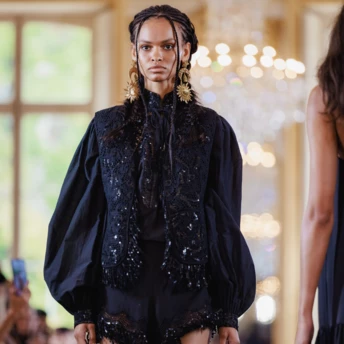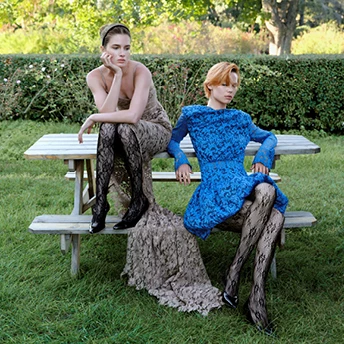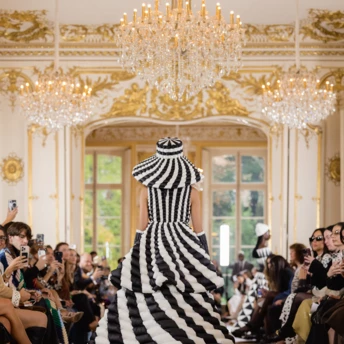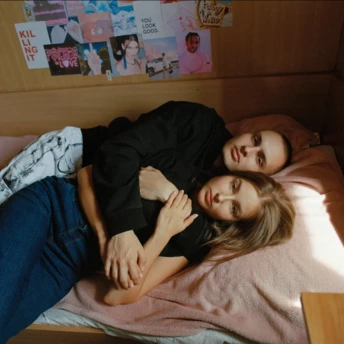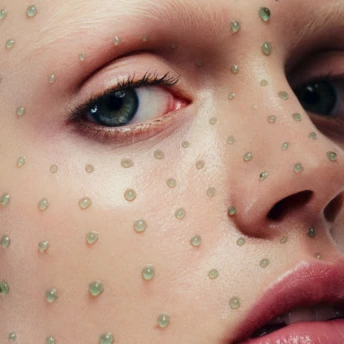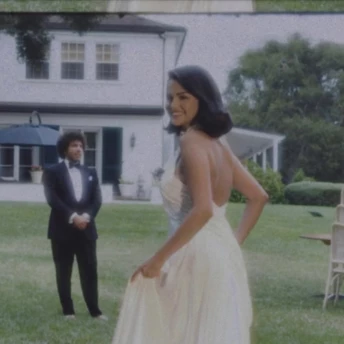VISIBLE: Amputees in VOGUE shoot
A new generation of adults and children with amputations and prostheses is admired and respected. For Ukrainian Vogue, Stepan Lisovsky photographed today's heroes.
These are the last days of the hot Kyiv summer. Loft 31 studio in the capital has an atmosphere felt by touch. The Vogue team is intensively preparing the heroes of the shoot. People in Lisovsky's lens are heroes in the original sense of the word.
There are only eleven of them on the site. 7-year-old Olexandra Pascal and Maryna Ponomaryova lost their legs due to Russian rocket attacks. Olexandra continues to do gymnastics, choreography and swimming; Maryna works with a rehabilitator daily, prepares to go to the pool and is full of desire to learn everything she knew before the amputation. She overcame the fear of her prosthesis (on the advice of a psychologist from Okhmatdyt, where she is undergoing treatment, the girl came up with a name for the prosthesis – Kesha). 20-year-old athlete Anastasia Shestopal, who lost her leg due to shelling in Kramatorsk, continues to train in the hall – now with a prosthesis. 32-year-old dancer Karina Stashchyshchak was amputated due to a spinal hernia, started dancing and, in May 2023, performed a number at the Eurovision Song Contest in Liverpool. Andriy Holopapa, Olexander Chayka, Artem Kuzmych, and Daniil Melnyk were injured during the war, leading to amputations.
We talk about them not only because of admiration for how well they met their challenges. You will hardly see people with amputations in the media space, particularly in the glossy. Unfortunately, due to active hostilities, constant Russian rocket, artillery and mortar attacks, as well as mine and explosive injuries (currently one-third of Ukraine, 174 thousand km2, is mined), the number of people with amputations will only increase. Last year alone, according to the State Emergency Service, 404 civilians were injured by landmines. The British news service Sky News reports that there are more than 25,000 amputees in Ukraine due to the war. The Wall Street Journal puts the figure at 50,000 (the estimate is based on data from Ottobock, the world's largest manufacturer of prosthetics).
A month and a half has passed since the shooting day, but every time I open the door of my house, I remember one of the participants in the photo project – 50-year-old Vadym Svyridenko, a hero of the Russian-Ukrainian war. He lost both hands and feet in 2015 after being wounded near Debaltseve.
Vadim shows me the capabilities of his prosthetic hand: it automatically rotates around its axis. "Why this option?" – I ask confused. "Turn the key in the lock," he explains. There are four such functions: scrolling clockwise and counterclockwise, opening and closing the palm (this allows you to pick up an object and hold it). Vadim explains that these are the main functions of hand prostheses.
He received his first prostheses in Kyiv, at the "Ortotechservice" plant, when he was being treated at a burn centre. He later received prosthetics at the National Military Medical Center named after Walter Reed in Bethesda. At the Kharkiv Institute of Prosthetics, Vadim received the first Össur Flex-Run running prostheses in Ukraine. He says that each stage of prosthetics has its own time, and the bionic prosthesis, which allows a person to partially restore the fine motility of the hands and natural gait, which many amputees want to receive in the first year, cannot be installed immediately. It takes time for the limb to thin out as the muscle shrinks and for post-operative swelling to finally subside.
People who play sports and live actively feel these processes more acutely. Sometimes, they have to change several stump receivers. That is why installing "bionics" in the first year after amputation is a wrong tactic: it is from this that stories are born about the fact that the expensive bionic prosthesis did not fit and the person does not use it. You have to get used to each prosthesis and master its capabilities gradually, with a rehabilitation specialist's daily training. In Ukraine, the prosthetics program is approved and financed by the state.
Vadim is the oldest among the eleven heroes of the photosout. He is the only one who, at first, would not guess that he has prosthetics: he hides them under the long sleeves of his shirts and his jeans. He says he is not ready to show them off to everyone around him: "When you are poked with fingers, it's unpleasant." The stigmatisation of the mutilated body is still intense in society. The reaction of people around is a thundering mixture of sympathy and horror from the awareness of the consequences of war, survivor's guilt and regret. However, regret is the last thing amputees need.
Despite the efforts of the authorities, Ukraine is not becoming a barrier-free environment — primarily because of the war. Our cities are not adapted for the lives of people with disabilities due to amputations, from the subway to public space. A lot of everyday things that healthy people don't even pay attention to in everyday life – such as the stairs to the underground passage – require superpowers from people with amputations. And no matter how much it is declared that all people are equal, true equality is possible only when every member of society is provided with the same conditions for movement in space and access to a normal life.
According to the results of a survey by the sociological group "Rating", conducted on the initiative of the "Ukrainian Veterans' Fund" of the Ministry of Veterans Affairs of Ukraine in September of this year, almost half of society (47%) imagines those who went through the Russian-Ukrainian war with disabilities. Half a year ago, in March, this figure was 29%. It is probably because recently, we see people with amputations everywhere: they are dressed in camouflage or civilian clothes, they can hide their prostheses behind long-sleeved clothes or overalls, and they can wear shorts or short skirts – so that the prostheses are visible. These are adults and children, civilians and military.
Ukrainian society clumsily and still shyly learns to look at and react to physical injuries. Most of the time, we don't know how to do it: pretend not to notice, look away, try to hide our despair, express gratitude or rush to help. "We understand with what feelings they look at us," says Ruslana Danilkina, who joined the ranks of the Armed Forces at the age of 18 and lost her leg at 19. "With curiosity, sympathy or disgust." Sometimes it hurts. Ruslana says that at the Superhumans Lviv Center for Prosthetics, Reconstructive Surgery, Rehabilitation and Psychological Support of War Victims, where she currently helps the wounded to recover, practical classes are organised for children, where they learn to perceive the fact that others may not have limbs.
In stigmatising amputations, we follow the traumatic experience of the Second World War. At that time, the USSR purposefully cleared public space of disabled front-line soldiers – it was believed that the population of the victorious country should consist of reference superhumans (in some ways, this echoes the idea of the Aryan nation promoted by the Hitlerites). And people without arms and legs have no place in the "standard society". In January 1945, the order of the People's Commissariat of State Security of the USSR, "On the removal of photographs of crippled invalids of the Patriotic War" was issued. It stated that photos of war invalids showing mutilations resulting from severe wounds at the front (loss of limbs, disfigurement of faces, blindness, etc.) should be removed. It was believed that enemy elements sent such pictures for provocations. There were special facilities and hospitals for disabled soldiers, compared to which a nursing home could be considered a spa resort.
How to treat people who have lost limbs? The best way to interact is to show respect. And an offer of help. 20-year-old Andriy Holopapa, with the nickname "Father", who went to war as an 18-year-old student and lost his left leg in the battle near Horlivka in Donetsk region in October 2022, says that sometimes he is annoyed by the question: "Where is the prosthesis from?" He says that the moment will soon come when he will begin to answer: "I fell from the pear tree."
Sportsman and military man Maxim Yermokhin, who blew himself up on an anti-personnel mine in Donbas in 2018, jokes with his brothers: "Now we can buy one pair of shoes for two." Athlete student Anastasia Shestopal, who lost her leg due to the shelling of the station in Kramatorsk, says that she is also ironic about her injury in TikTok but does not accept jokes on this topic from outsiders. Such mockery is acceptable only between people who know what amputation is from their own experience. Everyone else should refrain from pranks.
The body image accepted in society is changing: people are gradually getting used to the fact that bodies can be different and that it is necessary to accept them in all their diversity. It should also be extended to those maimed by war. Respect and gratitude to those who remain visible, paving the way for a free and truly diverse world.
OLEXANDER CHAYKA
33 years old, choreographer, military serviceman
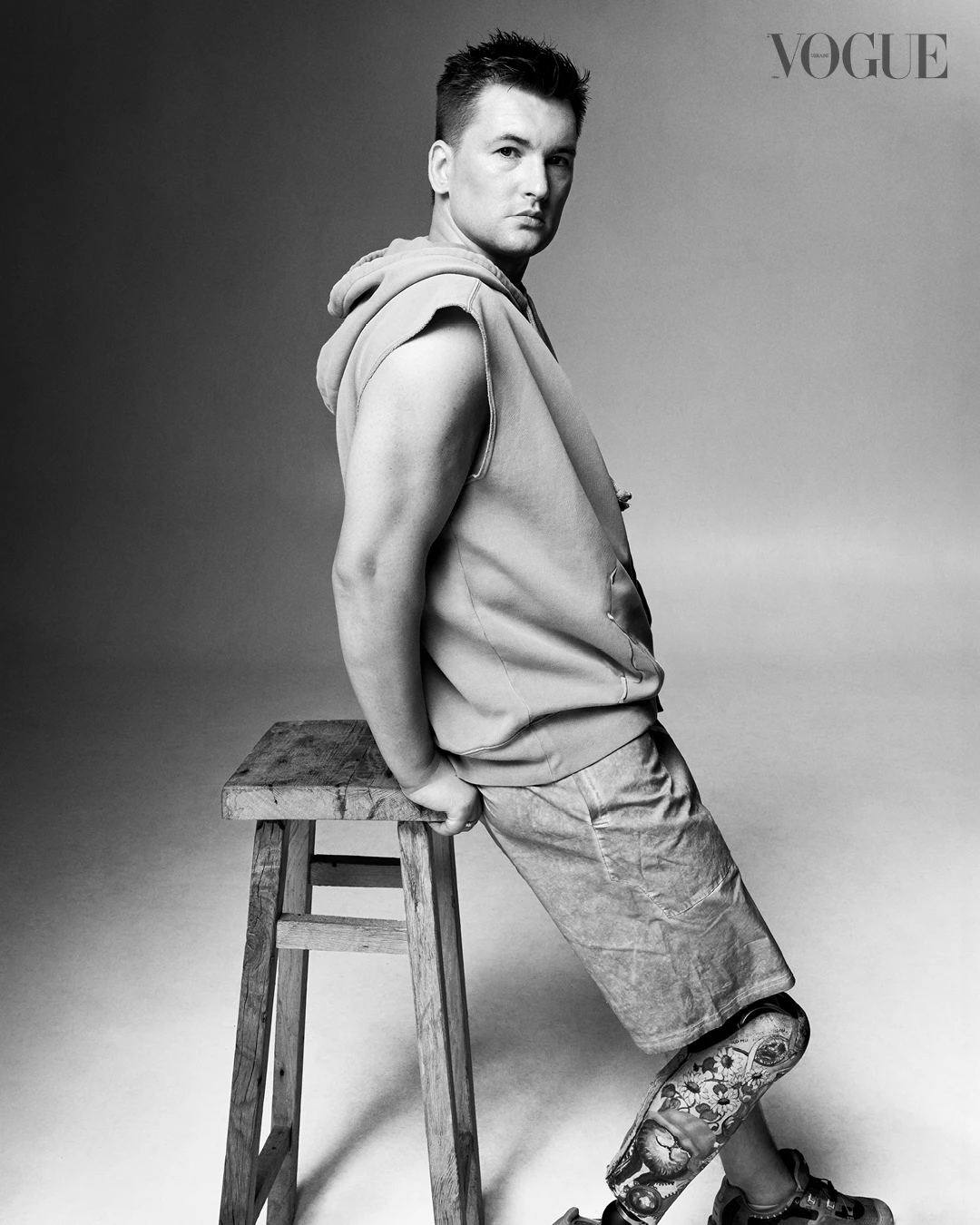
He lost his leg in April 2022 in a battle in Popasnaya, Luhansk Region. He started surfing and opened two acrobatics studios where he teaches himself. Oleхander сonducts lectures on war and injuries in schools and provides psychological support to people with amputations. He is raising a 5-month-old son.
DANIIL MELNYK
19 years old, commander of a mechanised unit of the Armed Forces, currently undergoing rehabilitation
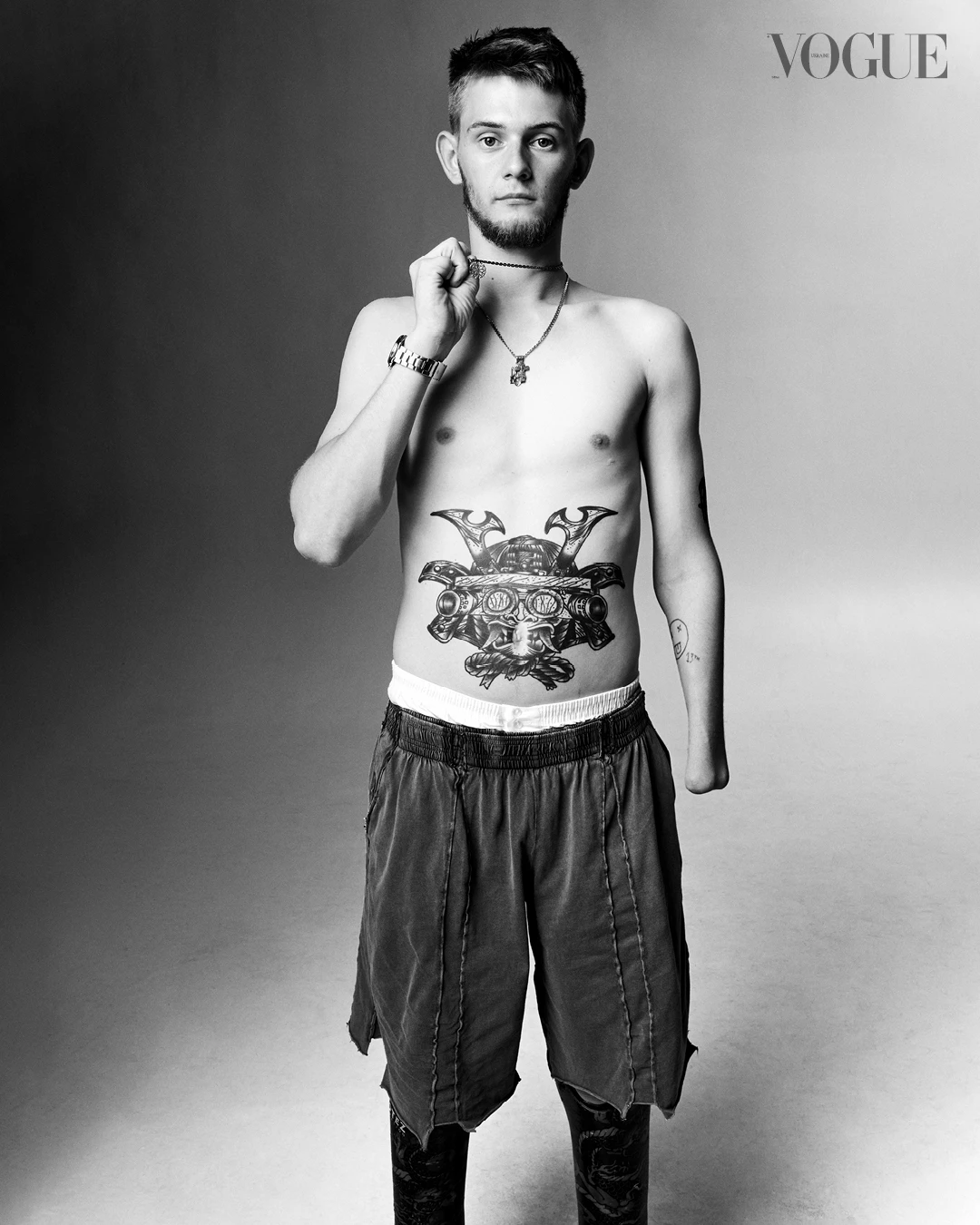
He partially lost his legs, left hand and fingers of his right hand in the battles with the invaders near Kyiv in February 2022. He writes poems and will return to the army to conduct psychological work with the wounded.
ОLEXANDRA PASCAL
Seven years old, schoolgirl, gymnast

She lost her leg as a result of a Russian missile attack on the village of Zatoka, Odesa region, in May 2022. She is engaged in artistic gymnastics, choreography, and swimming.
ANASTASIA SHESTOPAL
20 years old, athlete, Tiktok and Instagram influencer

She lost her leg as a result of a Russian missile attack on the Kramatorsk railway station in the Donetsk region in April 2022. She is interested in psychology, studies German, and tries her hand at modelling.
MAXIM YERMOHIN
28 years old, military serviceman, athlete
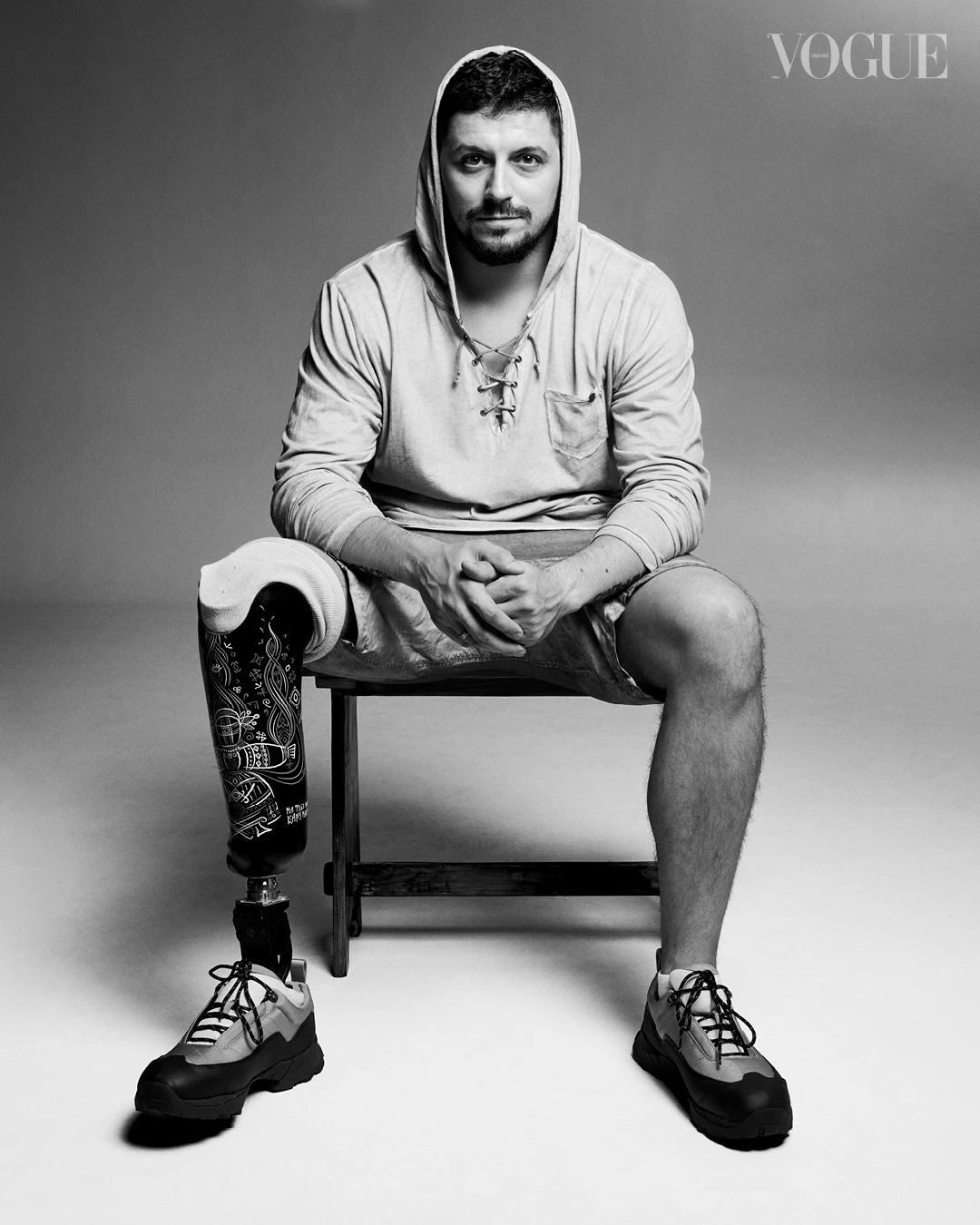
He lost his leg in 2018 in Russia's war against Ukraine. In 2022, he won four medals at the Invincible Games in The Hague and the Warrior Games in the USA. He has a tattoo: "Your will is always stronger than your body".
ANDRIJ HOLOPAPA
20 years old, student, military serviceman
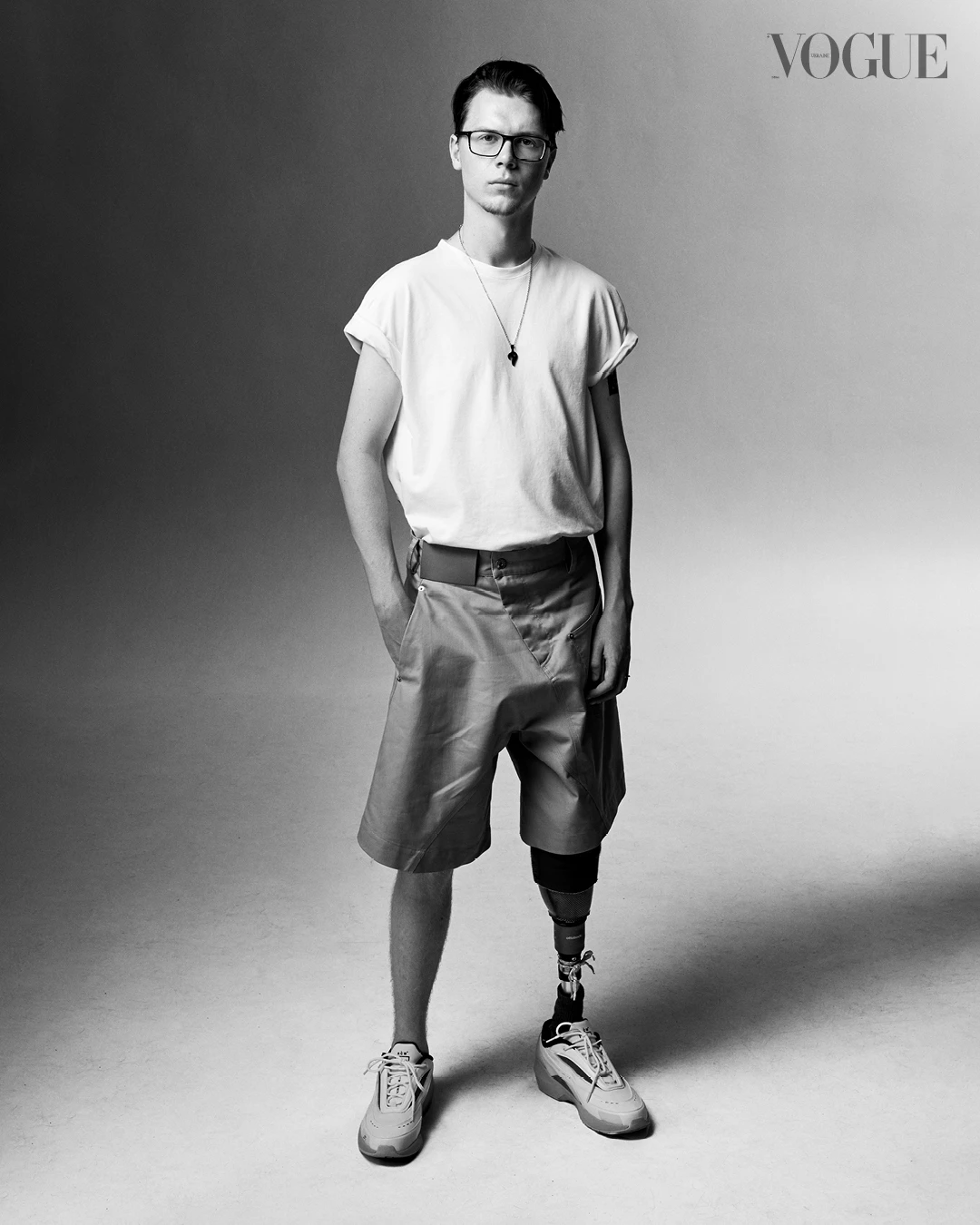
He lost his leg in a battle in October 2022 near Horlivka in the Donetsk region. On June 10, 2023, he rode 100 km on a bicycle with a prosthetic left leg. He is waiting for combatants to invite them to his wedding.
KARINA STASHISHCHAK
32 years old, dancer
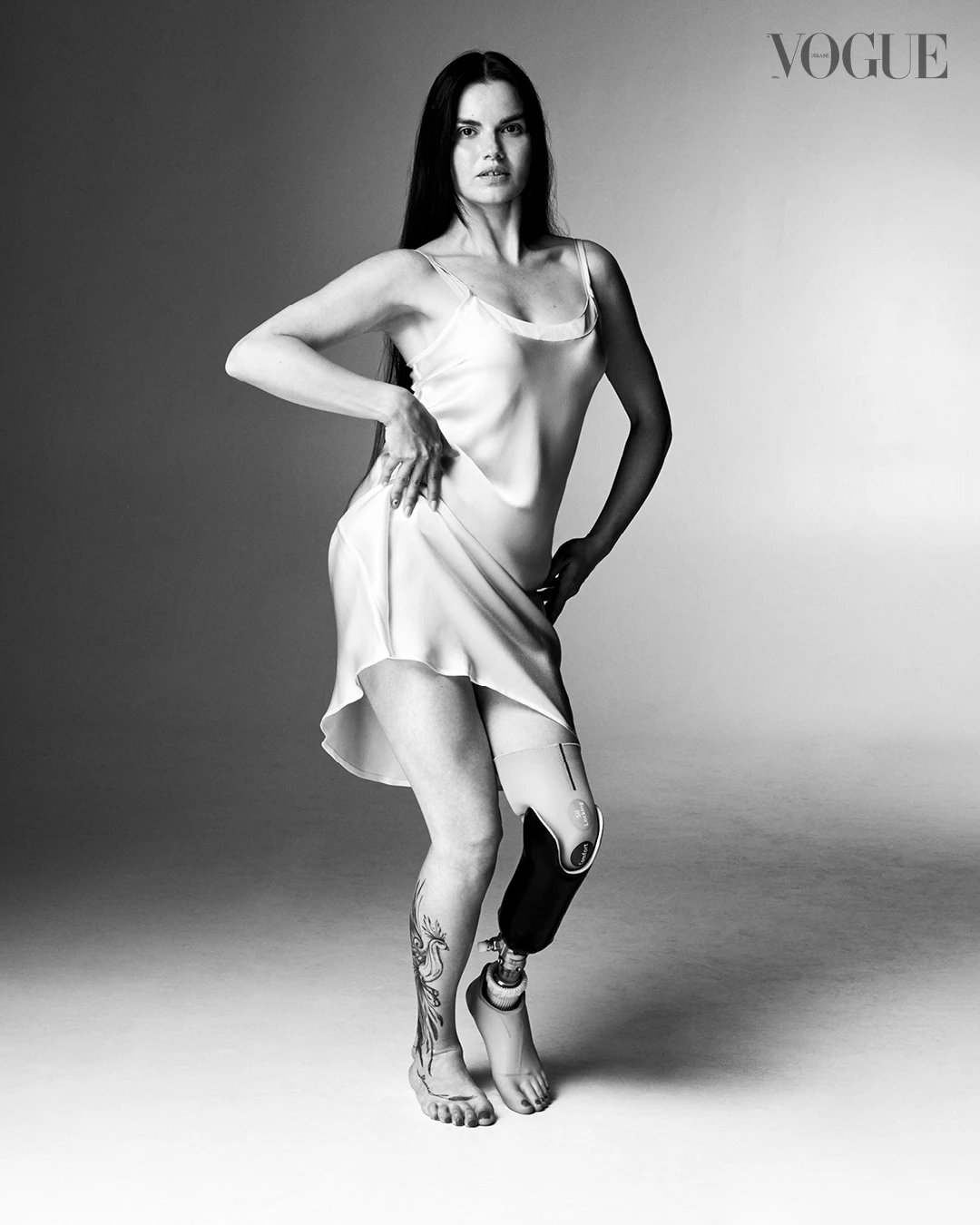
She lost her leg in 2018 due to an illness, a spinal hernia. She performed a dance number at Eurovision 2023 in Liverpool.
MARYNA PONOMARYOVA
Seven years old, schoolgirl
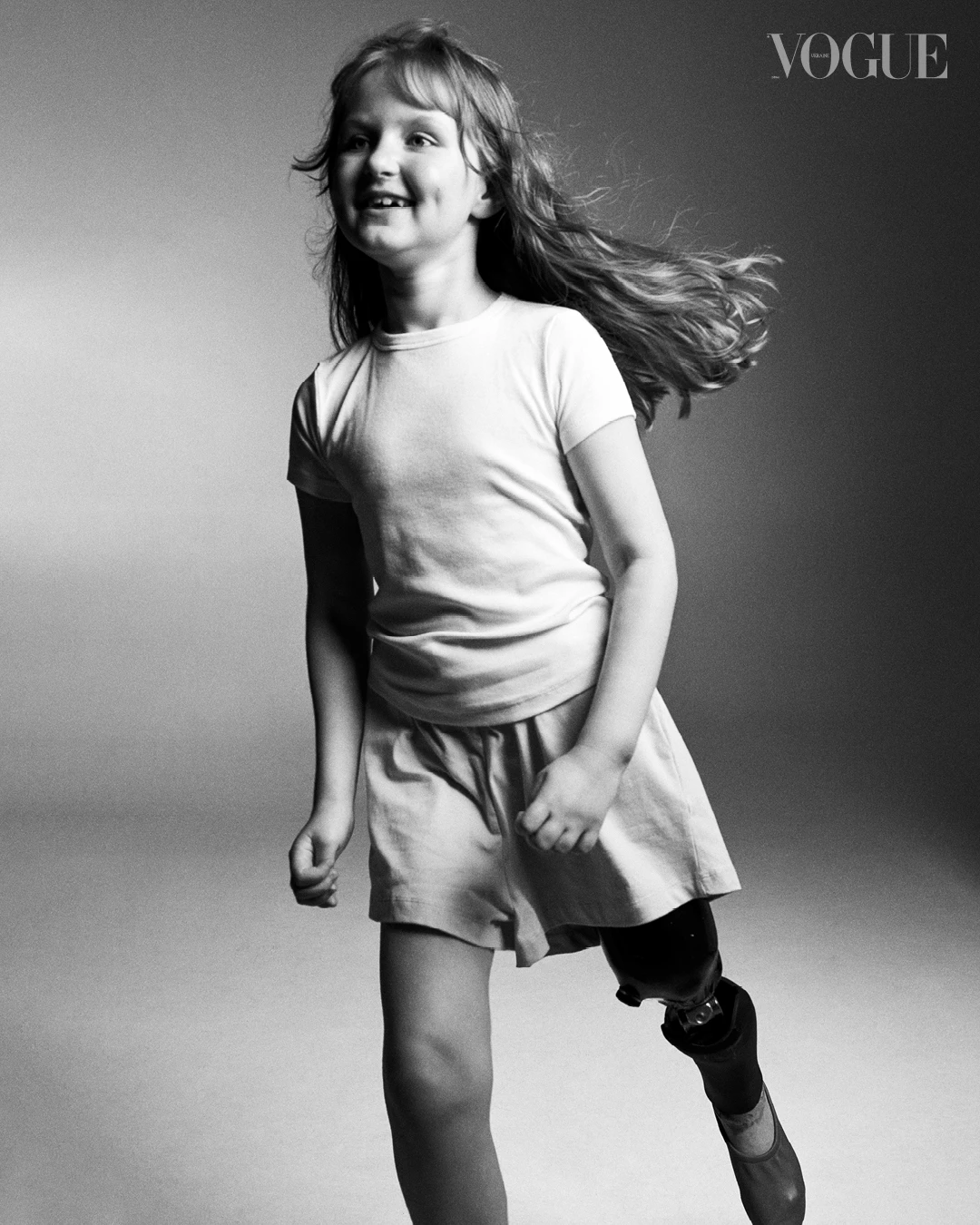
She lost her leg in May 2022 due to a Russian missile fire. She dreams of becoming a Formula 1 pilot.
VADIM SVIRYDENKO
50 years old, authorised by the President of Ukraine in matters of rehabilitation of combatants
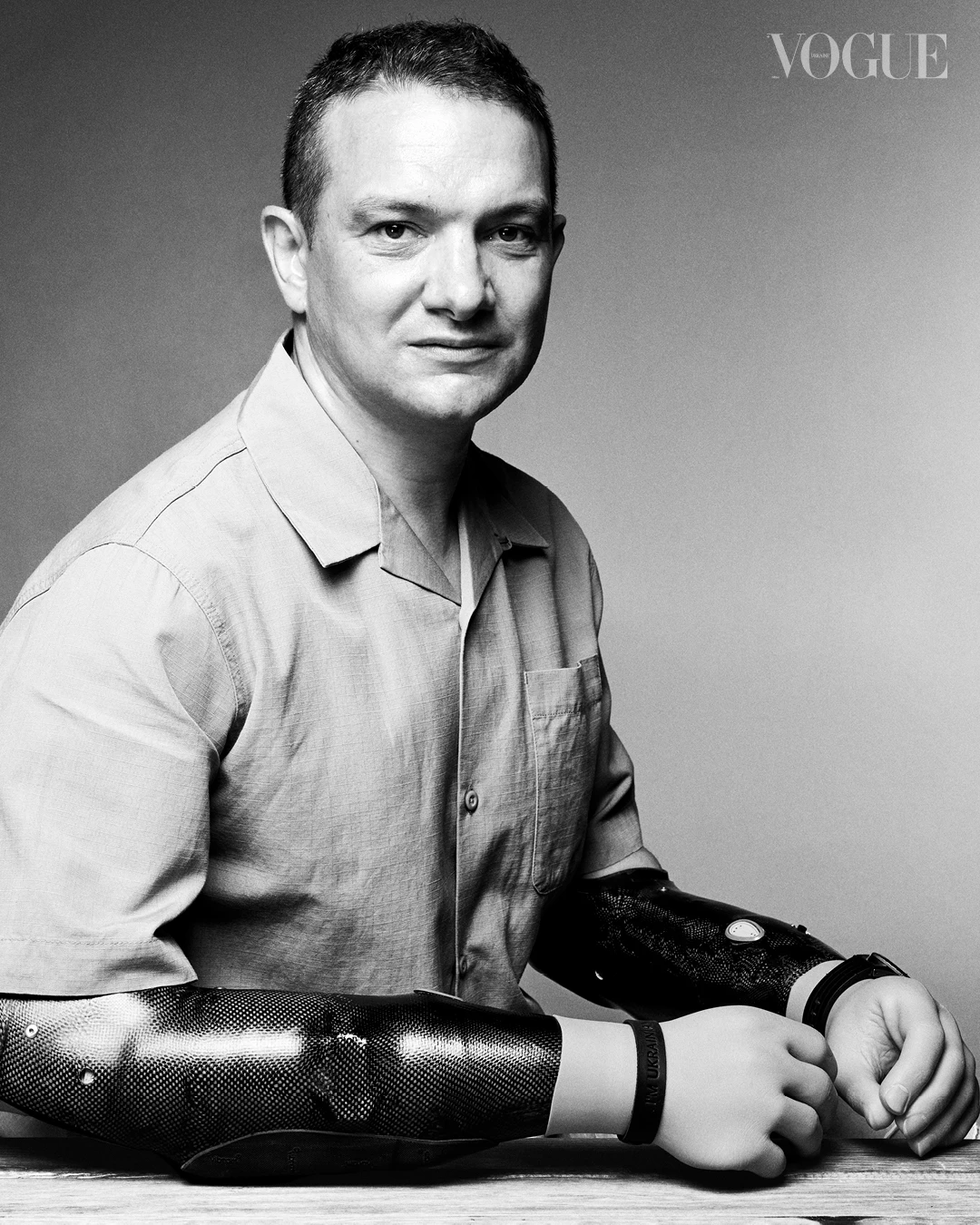
He lost both hands and both feet due to wounds received in 2015 in battles in Debaltseve, Donetsk region. In 2016, he ran 10 km at the US Marine Corps Marathon in Washington and became a medalist. In 2017, at the Invincible Games in Toronto, he won a bronze medal in the rowing competition on simulators.
ARTEM KUZMYCH
27 years old, veteran of the SSO, world champion in parajiu, champion of Ukraine in jiu-jitsu

He lost his leg in February 2019 in a battle in Luhansk region. He has founded the TMS HUB sports club for military amputees and injuries.
RUSLANА DANILKINA
20 years old, veteran, model, ambassador of the Superhumans centre
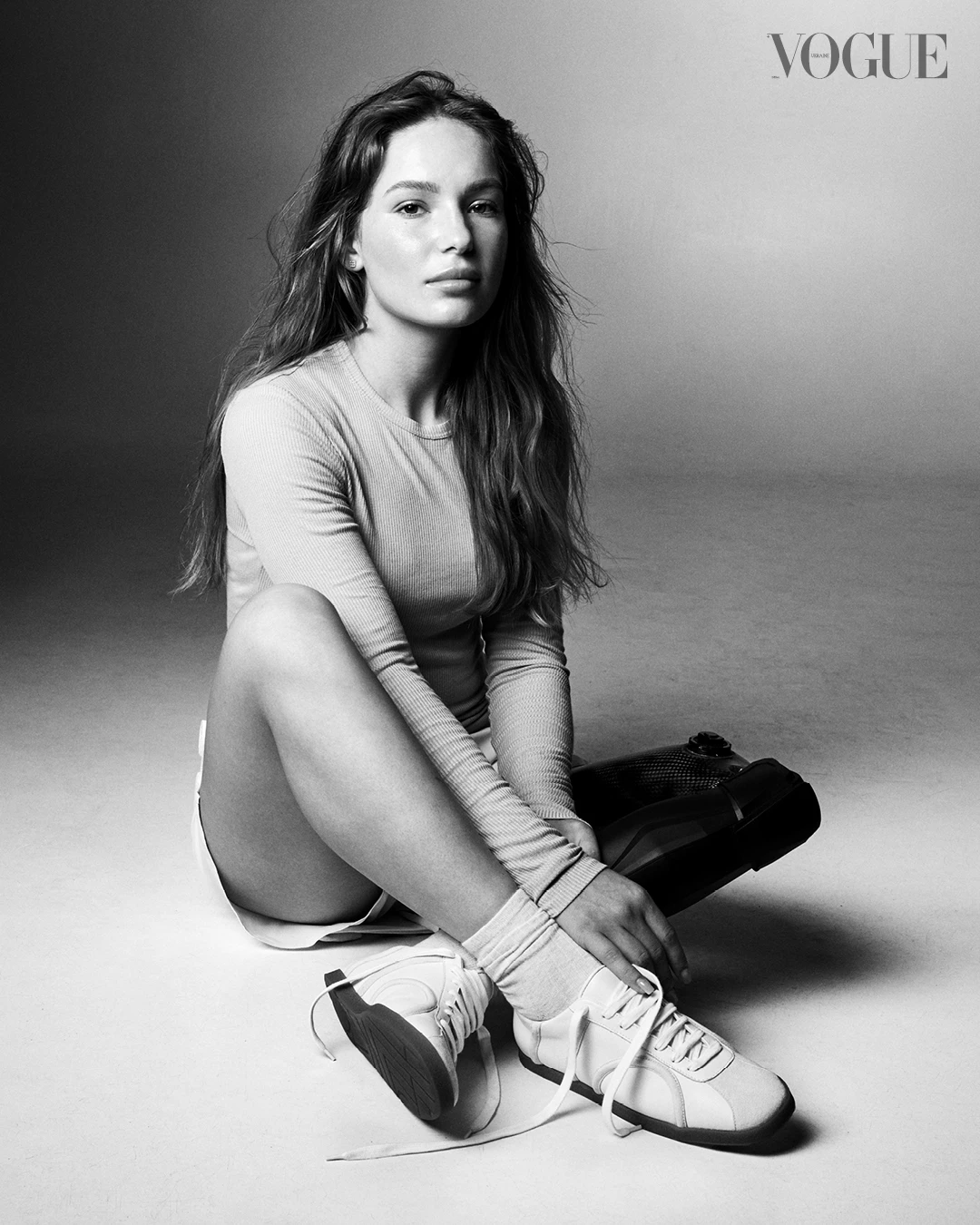
At the age of 18, she joined the ranks of the Armed Forces. On February 10, 2023, she lost her left leg during a rocket fire in the Kherson region. She works at the Superhumans Lviv Center for Prosthetics, Reconstructive Surgery, Rehabilitation and Psychological Support of War Victims.
Text: Alyona Ponomarenko
Photo: Stephan Lisowski
Style: Viktoriia Filipova
Hairstyles: Sasha Vetrova, Oksana Deneka, Diana Koval
Makeup: Svitlana Rymakova, Daria Zhadan
Lighting: Oleksiy Kuzmenko


